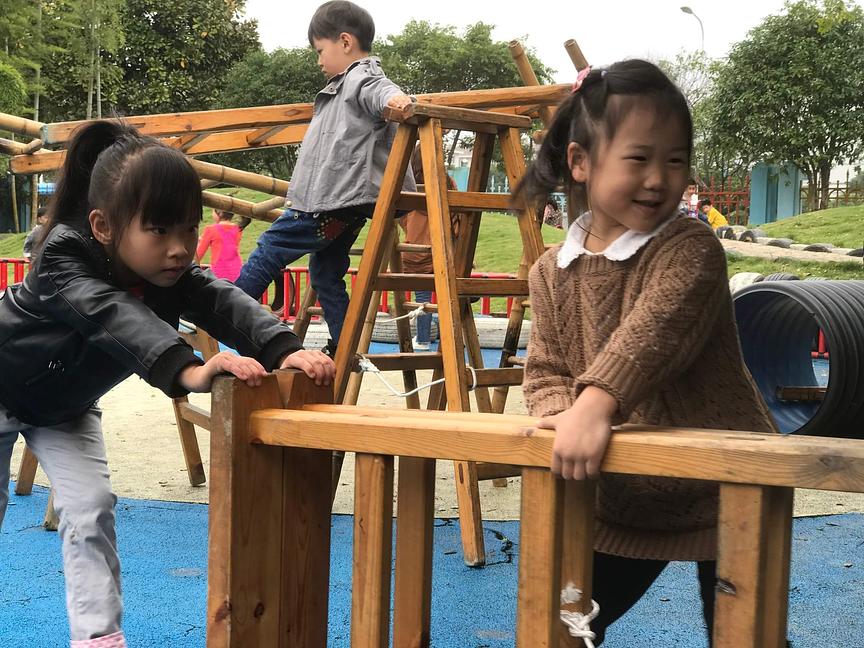In a school setting, the Anji Play approach includes specifically designed play materials and environments (indoor and outdoor), specific teacher practices, specific approaches to teacher, parent, and community growth, and a coherent and specific philosophy that calls for the discovery of the capable child, the sharing of those discoveries with others and for true play the be the child’s primary and most critical experience of direct learning. True play is any activity that is guided freely by the child’s intention and that is safe for the individual, the group and the environment (trueplayfoundation.org/tps)
In the practice of Anji Play, the child and adult are both learners, and discoverers and creators of meaning. However, their roles and responsibilities differ (trueplayfoundation.org/rights). The child’s role is to discover the world, themselves and others. The role of the adult is to provide, maintain, reflect on and adjust the conditions for the child to take part in the most deeply engaged and joyous expressions of true play. The role of the adult is to create the conditions for the child to reflect on and express their experiences. The role of the adult is to create human and physical environments that embody trust in the child as a capable learner, that are safe, accessible, consistent, honest, open, predictable and are defined by clearly articulated, simple and reasonable expectations. These environments provide the learner with the greatest freedom to understand the world and themselves, and the love, safety and trust to obtain a firm grasp of skills and abilities that are both expected and unexpected by others. These environments provide learners (children) the time to follow their intentions through to completion within a larger framework of time organization that responds to the needs of the individual child and group, and the priorities of the creator and maintainer of the conditions of learning.
In the Anji Play approach, all available resources are considered based on their use-value in pursuing the goal of discovering (understanding) children and learning, and sharing and reflecting on those discoveries. For that reason, technology plays a central, specific and evolving role in the practice of Anji Play: in Anji, teachers record play in photos and videos, they show those photos and videos to those same children in the classroom on the same day they were taken, and those children lead a discussion of their experiences. Teachers also use these photos and videos of children taking part in true play in their work together intramurally, within their institution and with related family and community members, extramurally with fellow teachers at the local, regional, national and international level. Their reflection on these recordings through a variety of frames informs their practice as teachers, their decisions about curriculum and environments, policy-formation and advocacy strategies.
In the practice of Anji Play, precedence is always given to the learner using their own means of expression (including specific language) to reflect on our describe their experience; learners are asked open-ended, clarifying questions during group and individual reflection, and great care is taken by the teacher to not lead children to specific insights, discoveries or learning outcomes during play or during reflection on play. Tools and activities for documenting and measuring growth, environmental change and the self are supplied to the learner, but their use and meaning is largely determined by the learner as part of activities which are the subject of regular reflection.
The practice and philosophy of Anji Play, views all people as capable learners, with individual needs and the capacity to grow. For children, much of that growth is part of their natural trajectory. Large, open-ended and minimally structured, inter-relating materials and open and varied natural environments in outdoor spaces provide children with a variety of complex potential inputs to self-structure their use of their entire bodies to understand assess and define fundamental concepts and truths (problem solving, building, etc.). Free and open indoor environments allow children the space and freedom to move, use, organize and manage a wide variety of smaller, open-ended materials. Walls are occupied by a changing, evolving and growing body of child-expression, organized by the adult.
True Play Community Network:
A global community of practice is beginning to take shape at the True Play Community Network. We invite interested educators and parents to join us for free as we build that community together.



